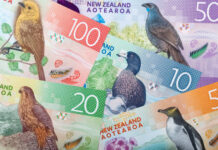Retail sales rose by 0.7% month-on-month (m/m) in July, up from the upwardly revised 0.3% (previously 0.2%) reading in June. This was notably above the median consensus forecast calling for a more muted gain of 0.4%.
Trade in the auto sector was weaker, declining by -0.3% m/m, relative to a 0.7% m/m gain in June. This largely reflected a decline of sales at motor vehicle dealers which fell 0.4% (down notably from last month’s 0.6% m/m gain). Meanwhile, sales at automotive parts and accessory stores were up 1.1% for the month.
Sales across other more volatile categories were generally higher in July. The building materials and equipment category rose by 0.7% m/m (after a -1.5% m/m decline in June) and sales at gasoline stations rose 0.4% m/m (the first monthly increase after eight consecutive months of decline) . The rebound at gas stations partly reflects recent upward movements in gas prices.
Sales in the retail sales “control group”, which excludes the above volatile components (autos, building materials and gas) and is used to estimate personal consumption expenditures (PCE) came in at 1.0% m/m – double the consensus forecast. Data for June was revised marginally lower to show an increase of 0.5% instead of the previously reported 0.6%.
- Among the control group, the largest contribution came from sales at non-store retailers (+1.9% m/m), followed by sporting goods stores (+1.5% m/m), and clothing and accessory stores (+1.0% m/m).
- The only two categories posting declines were furniture & electronics stores (-1.6% m/m) and miscellaneous stores retailers (-0.3% m/m).
Food services & drinking places – the only services category in the retail sales report – was up 1.4% m/m.
Key Implications
U.S. consumers kicked off the third quarter on a strong note with retail sales coming in well above expectations. Though still early yet, sales are currently tracking 4.7% annualized in 2023 Q3 relative to the revised 0.6% posted for Q2. Despite the strong start, looking ahead, we expect consumer spending to slow over the remainder of the year as past rate hikes continue to filter through the economy.
These expectations incorporate the view that the resumption of student debt payments and tightening credit conditions are likely to weigh on spending. Nonetheless, recent surveys suggest that consumers are more upbeat about their financial situation, job prospects and the downward direction of inflation. That outlook, along with a still-robust job market and solid real wage gains should provide some counterbalance and hold consumer spending near a stall speed over the coming quarters.












